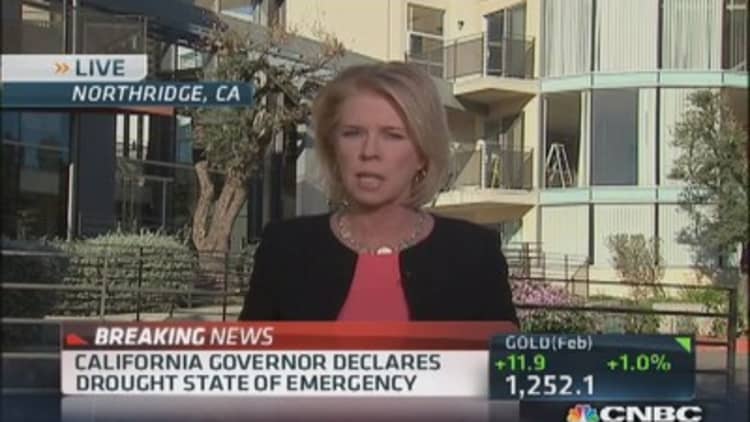Twenty years after a 6.7 earthquake hit Northridge, Calif., a lot has changed.
Public buildings, overpasses and hospitals have been retrofitted to better withstand another disaster. New construction must meet new standards. After all, 40,000 structures—some put the number at more than 100,000—were either damaged or destroyed in the 10-second jolt at 4:31 a.m. on Jan. 17, 1994, or in the aftershocks that followed.
In all, 57 people died, thousands were injured and 125,000 Southern California residents were at least temporarily homeless.
On that morning, this reporter tumbled out of bed before dawn, and the power immediately went out. After checking on my family and my house, I quickly threw on some clothes in the dark, reached for my eyeglasses and a cap, and raced along the 101 freeway at top speeds.
At the time I was working for the Fox station in Los Angeles, and the only thing I could see in the blackout were small fires popping up across the San Fernando Valley. Once at work, a cameraman and I rushed to a freeway collapse—the State Highway 14 overpass coming in from the Antelope Valley crushed cars beneath it on Interstate 5.
An LAPD officer died. He, too, had been racing in to work in the dark, not realizing that the overpass before him had disappeared. Here is a live shot I did that day for CNN.
While much has changed since 1994, a lot hasn't. Research by the Los Angeles Times looked at older, privately owned concrete structures in the city and found that at least 50 of them would most likely collapse in another strong quake.
The city has so far avoided passing a law forcing private landlords to retrofit. "A lot of places have rent control, so you know it's a financial issue really," said Kate Hutton, a seismologist at Caltech.

More disturbing, however, may be the number of residents without earthquake insurance.
"It's stunning for people to realize that 90 percent of the homes out here in California have absolutely no protection for earthquakes," said Glenn Pomeroy, head of the California Earthquake Authority (CEA).
His agency is funded by insurance companies to provide earthquake insurance for residents who can't get it any other way. Earthquake insurance is very expensive, with a high deductible that can equal 10-20 percent of the value of a home.
In 1994, about 40 percent of residents had quake insurance, but homeowners back then walked away from their structures as total losses, causing the first big housing downturn in Los Angeles. The quake caused $20 billion in structural losses and another $29 billion in economic losses.
Now, however, only 1 in 10 homeowners is covered. Pomeroy is concerned many residents assume the federal government—and federal taxpayers—will bail them out if there's another quake. "In fact, government assistance falls short of that. It doesn't rebuild a home."

Even some new construction is being questioned. At least two new mixed-use high-rises are being built in Hollywood at a cost of hundreds of millions of dollars. New mapping by the state indicates they sit on top of two newly discovered earthquake faults. The developers say geological tests have shown no evidence of an active fault, but opponents see the discovery as validation.
"This is an arrow in the heart of the most ill-conceived, dangerous and reckless project in the recent memory of the city of Los Angeles, probably in Los Angeles history," said attorney Robert Silverstein, representing a group of residents suing to stop construction.
(Read more: California drought hurts farmers and drives up food costs)
The city has recently moved to borrow a seismologist from the U.S. Geological Survey for a year to address issues of private construction. It is also using the anniversary to remind people to prepare for the next quake. Residents are supposed to have a three-day supply of food and water handy, plus batteries and flashlights.
Jeff Edelstein runs SOS Survival Products in Van Nuys, not far from the epicenter of the 1994 quake, but he is seeing only a slight pickup in business. "There's still a state of denial," he said.
Whatever the case, at some point in the future, Californians will get another wake-up call.
"There's a better than 50-50 chance that we will have a catastrophic earthquake in California that will kill thousands of people," warned Gov. Jerry Brown last week. "The people of LA should be cautious, because earthquakes are just around the corner."
—By CNBC's Jane Wells; Follow her on Twitter: @janewells


